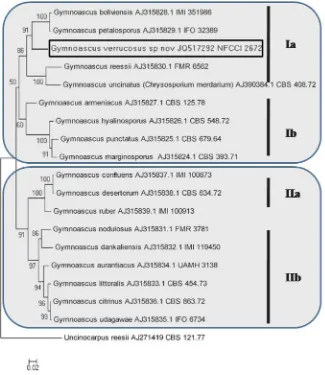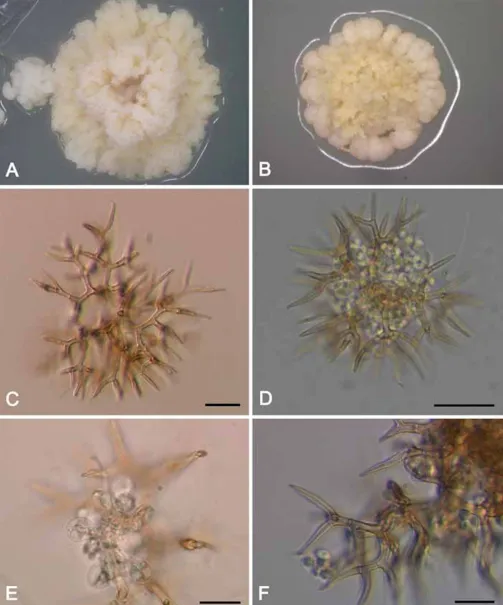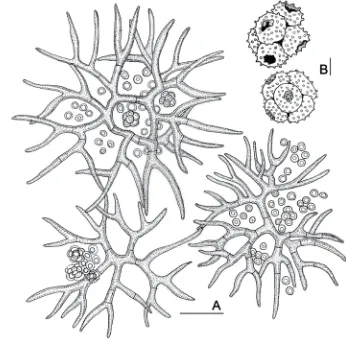A new species of Gymnoascus with verruculose ascospores
Full text
Figure




Related documents
Hyphal system: trimitic, generative hyphae 2.5–3 µm diameter, thin walled, hyaline; binding hyphae 4.1 µm, thin walled, yellowish; skeletal hyphae 7.9 µm diameter, thick
The species with surface weakly ridged to smooth have columnar hyphae and their apothecia have a thick amphithecial tissue, whereas that species with densely
This collection is similar to the assigned species but differs from it in having more number of opposite appressoria and smaller ascospores (Hansford, 1961).. c Apical
setose, ostiolate ascomata, bitunicate asci, dark brown, wedge-shaped to clavate, muriform ascospores, and a hyphomycetous asexual state producing ellipsoidal, septate,
Rhizotexis Theiss.. Black ascomata formed on lower side of leaves. Section of ascomata. Peridium of ascomata. Asci containing eight ascospores. Brown ascospores with one
The sexual state of Setophoma sacchari is similar to Phaeosphaeria nodorum in size and septation of ascospores, asci and ascomata, but ascospores and asexual characters differ
Ascospores hyaline, fusiform, smooth, straight to slightly flexuous, 1-septate, constricted at the septa, guttulate, 9–13(–15) × 2–4 µm.. Notes:—Previously, only four species
This study covers 18 species that occur on dung, but the species number is even higher when including non- coprophilous taxa, those with ascospores of a varying cell number, and

